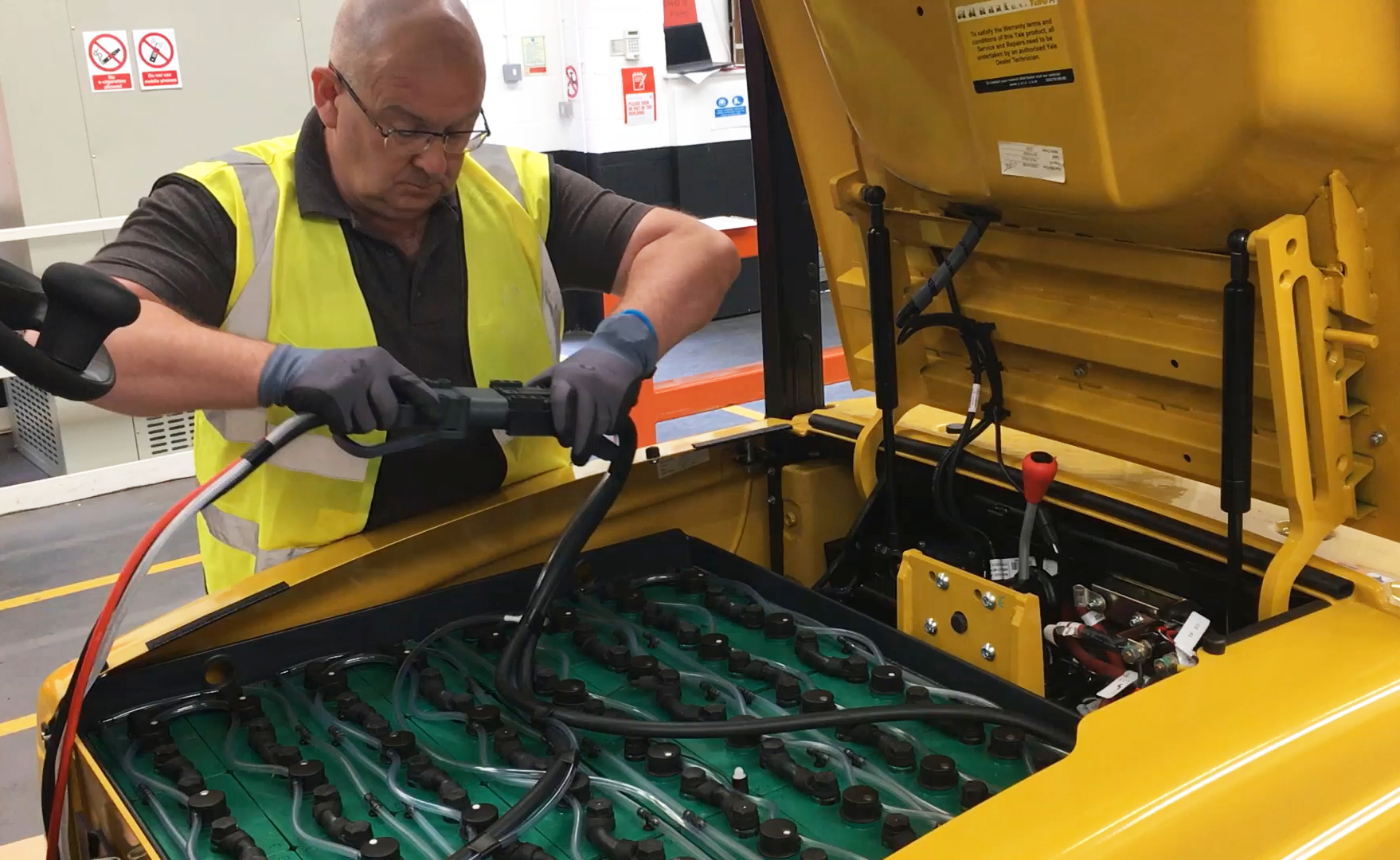From environmental to efficiency gains, there are many reasons why business across the UK are switching power sources from
traditional Internal Combustion Engine (ICE) trucks to electric models.
As with any operational differences – whether to the equipment, its application or the working environment – it’s vital that this period of change is well managed to ensure that everyone stays safe.
We’ve highlighted some key considerations to help you keep operations running safely and smoothly as you switch…
Training
While experienced operators switching from comparable ICE to electric trucks should not need to start from scratch with their training, they will almost certainly require familiarisation training to ensure they are comfortable with the new truck. Your procedure for new starters will continue to require that they undertake basic, job specific and familiarisation training, as they would on any forklift. Obviously this should encompass any truck-specific controls, safety measures, etc, so that they are ready to use the equipment you have on your site.
Pre-operation checks
Those used to ICE trucks who are now expected to use electric forklifts will need to be made aware of any new or different functionality, as well as any changes to their usual pre-use check procedure.
For example, before starting each shift, your operators will need to incorporate some battery-specific checks, including:
-
- Checking battery access, condition, charge levels and charge points
- A visual inspection of the battery, including checking for any damage to cables and checking the fluid levels (the method for this will vary depending on battery type)
Sound
A big difference between ICE and electric trucks, is the difference in sound between engine types. It’s important to remember that electric forklifts are much quieter, so those working around them may not hear them coming, as they could with their ICE counterparts. Awareness of this must be raised to anyone who could be affected so that they can take extra care, for example at blind corners, doorways, crossing points or the ends of aisles.
Relevant safe systems of work must be in place and regularly reviewed to account for any changes in circumstance. To help reduce risk, you could also look at adding additional lights and sounders to make the truck more noticeable. If you have employees with vision or hearing impairments, make sure you consider how they will remain safe.
As general good practice, forklift awareness training should be provided for those working around MHE on foot, to improve understanding of the dangers and the importance of remaining vigilant to their surroundings. It’s important to keep pedestrians alert to any operational or procedural changes which could impact them, so that they can continue to anticipate risks.
Maintenance
Always ensure that those responsible for the maintenance of your MHE are fully conversant with your truck types, should anything change. With a broad spectrum of truck types and battery systems on the market, its vital that they understand the types that you have on site. While there are many differences between ICE and electric trucks, there are also variances within the electric range itself, with lithium-ion battery systems varying significantly from lead acid varieties, for instance, in terms of maintenance.
Charging
With electricity, acids and explosive gases all involved in the process, battery charging can be extremely dangerous if not done correctly. It’s imperative that operators understand the risks and how to carry this out safely.
Charging should be done in a dedicated area with adequate ventilation and appropriate PPE and safety equipment. The charging area should be created under guidance and instruction from battery specialists.
The truck should be parked for charging to allow the battery cover to be raised – this must be put back in place after charging. Before charging or use of the truck, operators should always check that the battery is clean and free from debris, with no sign of damage to cells, cabling, or connectors. Any signs of corrosion should be reported.
There are several different systems in place to allow those responsible to check battery fluid levels. Some businesses use external suppliers to maintain their batteries, whilst others do so in house – if you have an external service in place, it must be made clear to operators that they should not try to top up batteries themselves. Ensure your operators are fully aware of the battery type/s on site, and understand the charging and topping up procedures.
Remember, it is important to have a schedule in place for checking the fluid levels – this can be obtained from the supplier of your lift trucks and, where relevant, incorporated into your operators’ pre-use checks.
Site layout
Unlike ICE trucks, which can simply be made safe and the key removed for parking, electric trucks will need to be returned to a designated charging area once they have been used. This may mean that parking bays, access points and site layouts need to be reconfigured for safety and efficiency.
Ultimately, as with any changes to your operations, it’s vital that the risks and relevant safety measures associated with any new MHE are communicated to those affected so that they can continue to keep themselves, others and your business out of harm’s way. Raise awareness and monitor regularly to stay safe, compliant and productive.
If you require guidance on any aspect of forklift safety or training, please don’t hesitate to contact us here or on 01246 555222.

